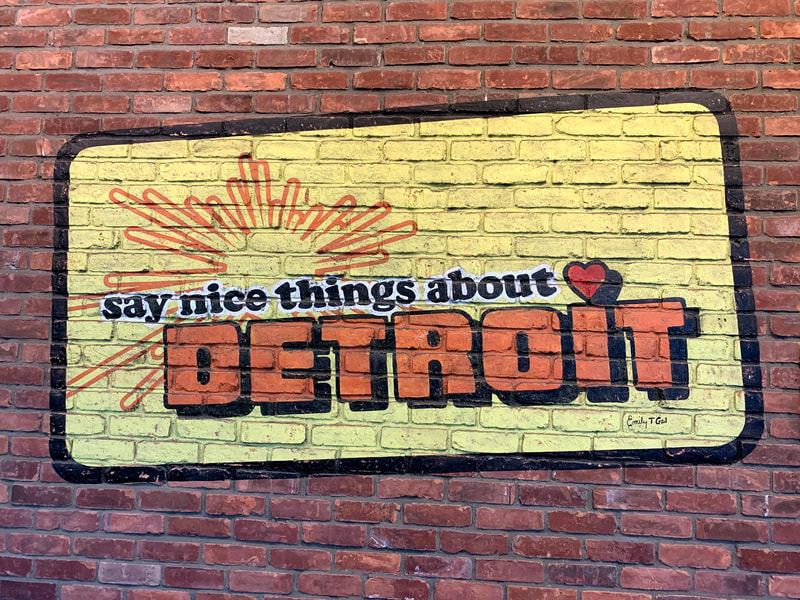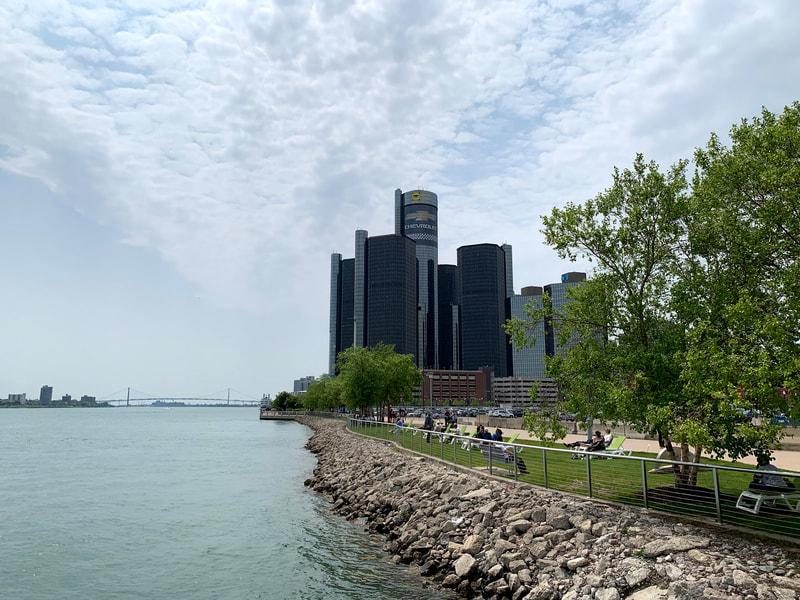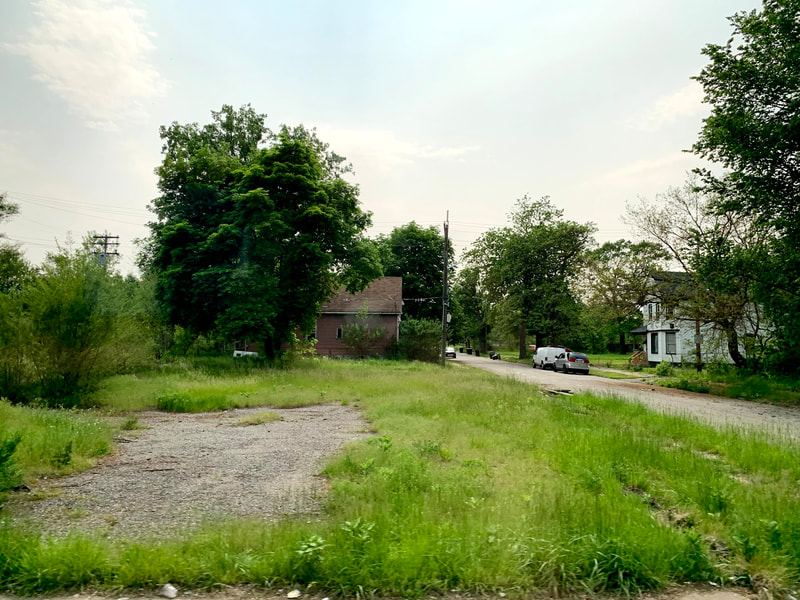Something I noticed immediately during my first few days at Detroit is how much pride residents have in their city. I cannot remember how many times I was greeted with a friendly “Welcome to Detroit!” or saw locals wearing Detroit gear (back home I would pretty much never see anyone wear a New Jersey shirt, and in New York City the only people that ever wore “I Love NY” merch were tourists). During our first group meal at Traffic Jam and Snug, I clearly remember a customer walking by our table and saying to us, “I want to welcome you to our city, it’s really not what everyone thinks it’s like.” All around Detroit I observe murals containing phrases like “Say Nice Things About Detroit” or “Detroit Hustles Harder,” which really demonstrate the fierce strength and spirit of the city. There’s just so much unity among residents, and this unity has no racial bounds; it’s really evident that every Detroiter wants to see their city succeed. This reflects the quote that was on the postcard that we received after our DXF Tour, “Detroit is big enough to matter in the world, but small enough for you to matter in it.” From witnessing Detroit SOUP to shopping at Eastern Market, I felt that everyone was very much a part of the community. Detroit is a large city (the fourth largest in the US at one point) but the friendliness of the residents is like that of a small town. In New York, locals would never stop at a restaurant to talk to you. Quite frankly, most of the time they wouldn’t even look at you. I really enjoyed the scavenger hunt we did in Downtown because it was a huge pleasant surprise. The Riverwalk, Guardian Building, Campus Martius among so many other places that we went to really showed just how awesome Downtown truly is. Campus Martius was actually rated one of the best public spaces in the entire country! If you had asked me even a year ago, I would not have envisioned walking in Detroit to be like what it actually was; in fact, I probably wouldn’t have wanted to do it at all. I’m excited to continue being pleasantly surprised by what this city has to offer throughout my time here this summer.
That’s not to say that there are still things in Detroit that fit my initial, preconceived notions of the city shaped by the media. I mentioned earlier that Detroit used to be the fourth largest city in America. As many already know, in the latter half of the 20th century, the city faced a huge population decline as a result of the downturn of the US auto industry. Driving through the area where the Heidelberg Project was allowed me to see firsthand the blight that Detroit was infamous for: boarded-up, vacant homes mixed in with large swaths of empty lots with overgrown grass. Glancing up at the TV in the Wayne State gym, I see the latest story, which is titled, “8 murders in Detroit in 24 hours.” While it is very apparent that parts of the city are booming (especially in Midtown and Downtown, I see newly-built luxury lofts with establishments selling Poké bowls and avocado toast nestled between industrial-age buildings and converted Victorian mansions), many parts of the city are still in the state of urban blight that media has so widely depicted to the general public.
This is where I hope to come in. Detroit has definitely been rebounding, but this newfound prosperity has not been shared by all of its residents. Racial tensions and financial problems have plagued Detroit for decades, and the scars of these struggles are still visible today and have been key factors that have been holding the city back from rising even further. Striving to make advancement opportunities and new city amenities (like MoGo, the city’s new bike-sharing program I’m working with!) more accessible to all Detroiters, regardless of race or financial situation, will allow the city to rise even more dramatically. I also hope to talk to more locals, especially those who were around during the toughest times, because it really gives you a unique perspective of the city. After talking with some already, I’ve realized that I don’t like calling Detroit’s current situation a “comeback” anymore. One of the people I met at a MoGo community event told me something that really stuck with me, “Detroit isn’t coming back. Detroit was always there!”, once again demonstrating the resilience and pride held by the people of this unique city.
That’s not to say that there are still things in Detroit that fit my initial, preconceived notions of the city shaped by the media. I mentioned earlier that Detroit used to be the fourth largest city in America. As many already know, in the latter half of the 20th century, the city faced a huge population decline as a result of the downturn of the US auto industry. Driving through the area where the Heidelberg Project was allowed me to see firsthand the blight that Detroit was infamous for: boarded-up, vacant homes mixed in with large swaths of empty lots with overgrown grass. Glancing up at the TV in the Wayne State gym, I see the latest story, which is titled, “8 murders in Detroit in 24 hours.” While it is very apparent that parts of the city are booming (especially in Midtown and Downtown, I see newly-built luxury lofts with establishments selling Poké bowls and avocado toast nestled between industrial-age buildings and converted Victorian mansions), many parts of the city are still in the state of urban blight that media has so widely depicted to the general public.
This is where I hope to come in. Detroit has definitely been rebounding, but this newfound prosperity has not been shared by all of its residents. Racial tensions and financial problems have plagued Detroit for decades, and the scars of these struggles are still visible today and have been key factors that have been holding the city back from rising even further. Striving to make advancement opportunities and new city amenities (like MoGo, the city’s new bike-sharing program I’m working with!) more accessible to all Detroiters, regardless of race or financial situation, will allow the city to rise even more dramatically. I also hope to talk to more locals, especially those who were around during the toughest times, because it really gives you a unique perspective of the city. After talking with some already, I’ve realized that I don’t like calling Detroit’s current situation a “comeback” anymore. One of the people I met at a MoGo community event told me something that really stuck with me, “Detroit isn’t coming back. Detroit was always there!”, once again demonstrating the resilience and pride held by the people of this unique city.



 RSS Feed
RSS Feed
